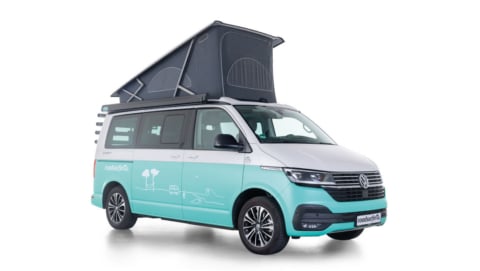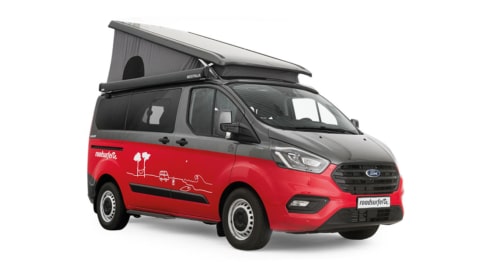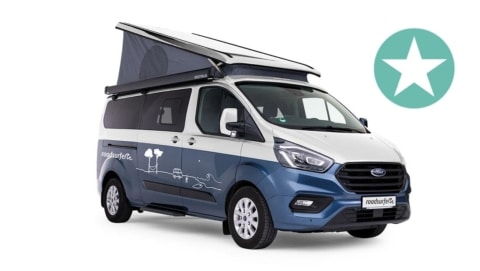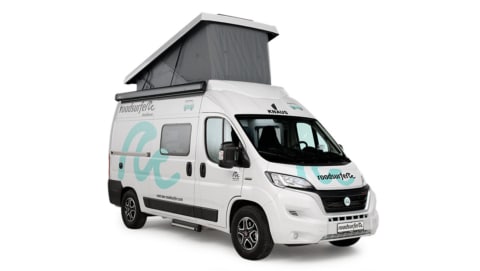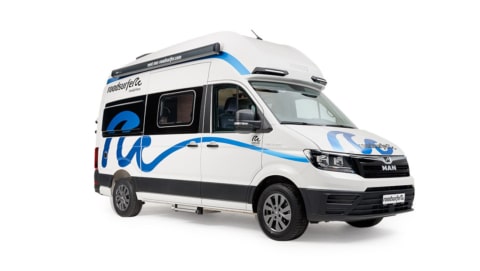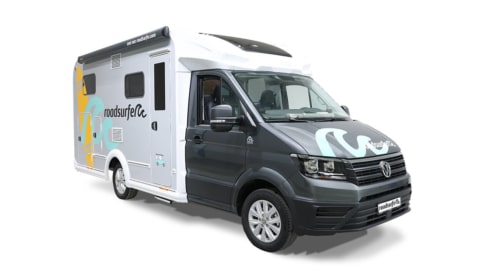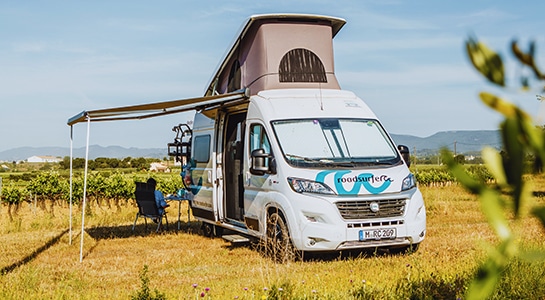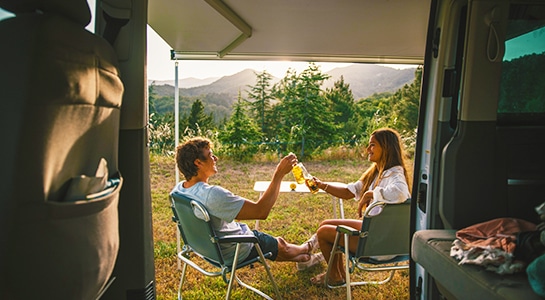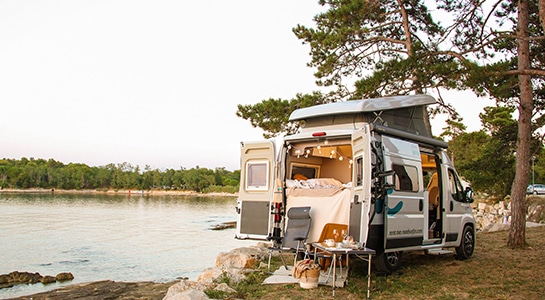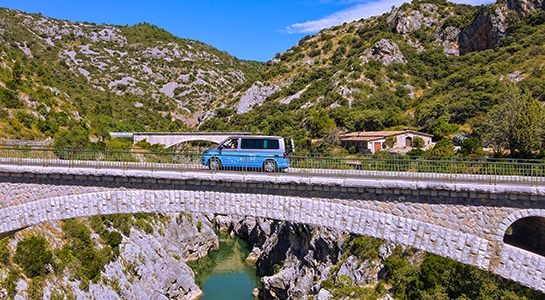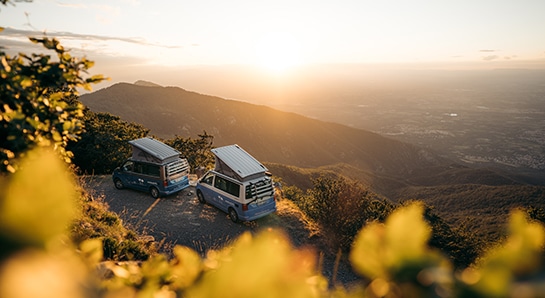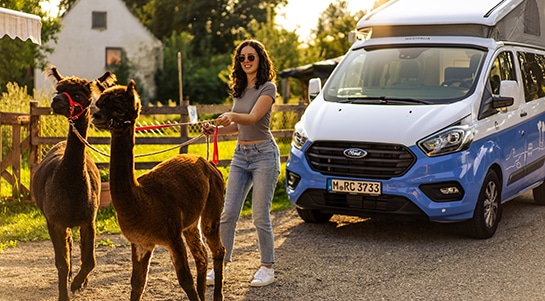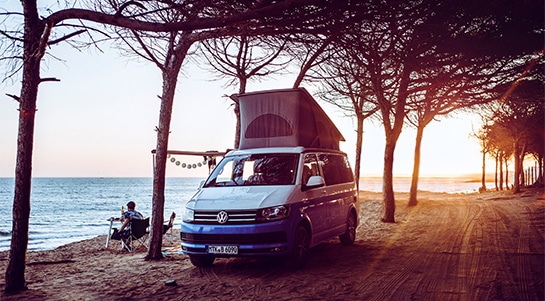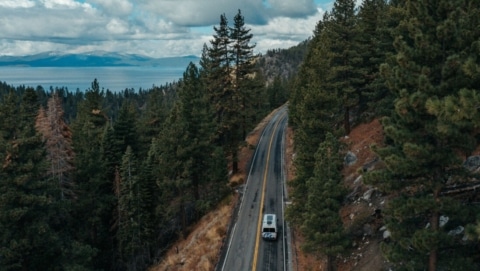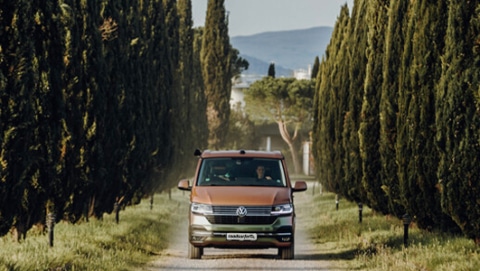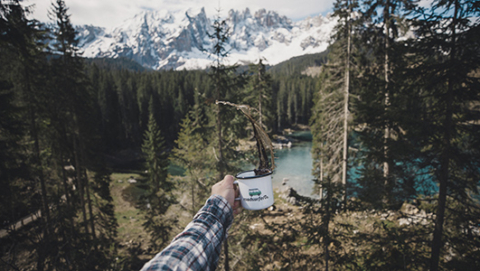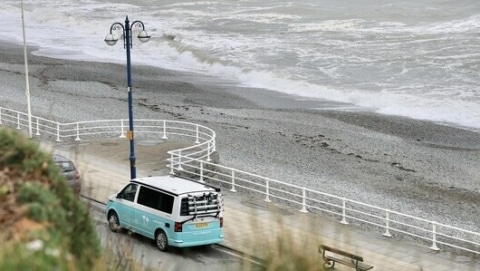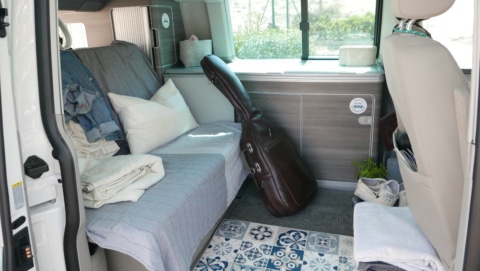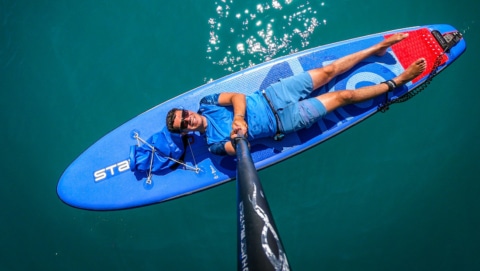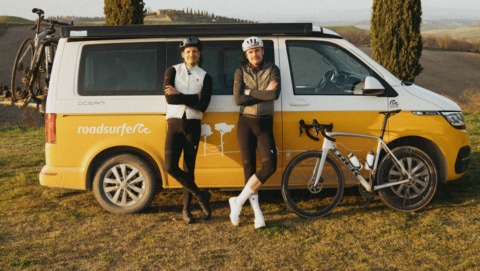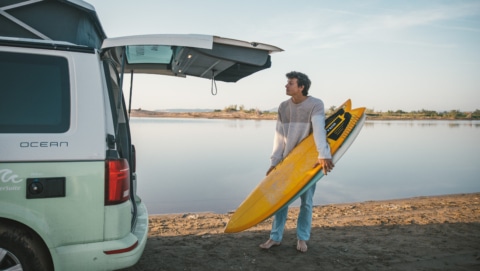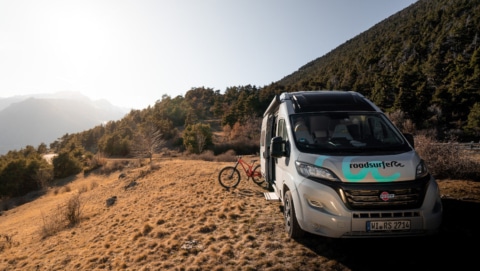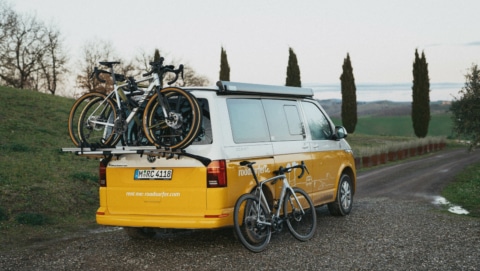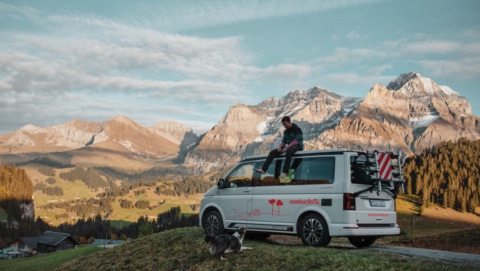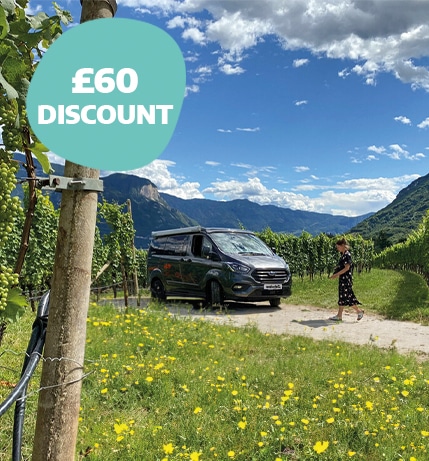Springtime Adventures in the Sun
Fancy a sunny getaway? Subscribe to our newsletter today to get a £60 spring discount (minimum 5 nights). Start planning your spring adventure now!
Hire a campervan in Brussels
The capital of Belgium is not only the hub of NATO and the EU, but it is also a paradise for visitors from all over the world with its famous Manneken Pis, the Atomium, the Royal Palace and Art Nouveau architecture. Hire a campervan in Brussels and explore the city and its surroundings.
Collect your campervan rental in Brussels and go
Read on below for the roadsurfer campervan rental station address in Brussels and helpful tips on how to get to us!
Brussels
Brussels
Address
Bergensesteenweg 764
1600 Leeuw-Saint-Pierre
Belgium
Getting to the station
From Brussels Airport (BRU): From the airport, take train 3730 Mons to “Brussels Zuid/Midi”. Transfer to bus 170 toward “Brussel-St.P.Leeuw-Halle” and exit at “Sint-Pieters-Leeuw Witte Roos”. From here, it’s a two-minute walk to the roadsurfer station.
Alternatively, you can take bus 171 toward “Brussel-Brukom-Halle” to “Sint-Pieters-Leeuw Brukom”. From here, it’s a seven-minute walk to the roadsurfer station.
From Brussels South Train Station (Brussel-Zuid/Midi): From the station, take the S2 (S-Bahn) suburban train to “Buizingen”. From here, it’s a 10-minute walk to the roadsurfer station. Alternatively, from the station, take bus 170 to “Sint-Pieters-Leeuw Witte Roos”. From here, it’s a 2-minute walk to the roadsurfer station.
Parking information
Parking is available in the industrial estate next to our station. Take care when approaching the station because we are located on a sharp turn. Please slow down when your navigation system announces the destination is within 100 metres.
roadsurfer campers in Brussels
Your roadsurfer perks
Unlimited mileage
Free 2nd driver included
Rebook or cancel with the Flex option up to 48 hours before departure
Roadside assistance
Free camping equipment and kitchen utensils included
Motorhome hire in Brussels
Brussels is located at the heart of Europe and is strategically a great location to rent a motorhome or campervan in Brussels and explore the surrounding areas of Luxembourg, Germany, the Netherlands, and France. We also recommend allowing yourself enough time to explore the city itself. With our tips and practical information on hiring a campervan in Brussels, you can start planning your holiday with peace of mind.
Campervans: Equipped and ready for adventure
When you hire a campervan in Brussels you can be on the road right away, trusting that your roadsurfer home on wheels is fully stocked. Your campervan comes with an awning, camping table and two chairs to enjoy the space outside of your vehicle. The kitchen box allows you to save money on eating out: you’ve got all the pots, pans, and utensils to cook up your own meals. There’s even a corkscrew and bottle opener, and a coffee maker, plus mugs for your morning coffee or tea, although you’ll want to bring dish towels, sponges, and eco-friendly dish soap. When you rent a small motorhome from Brussels you will need to bring your own bedding, or you can hire what you need from the station. Full details of what’s included and our suggestions on what to bring along to your Brussels campervan holiday can be found in the equipment list.
Best time to hire a campervan in Brussels
We highly recommend renting a motorhome in Brussels between April to June and September to October, when the temperatures are milder and there are fewer tourists. The Belgian and European capital has a lot to offer such as historical architecture, the mythical Manneken-Pis, the Atomium, or their famous Liège waffle, delicious chocolate or Belgian beer. Why not hire a campervan for ten days and explore the surrounding countries or the other larger cities of Belgium such as Bruges or Antwerp.
Water tank services near Brussels
You’ll need to fill up your campervan rental with fresh water when you collect it and empty the waste water before your return it. You can do this at the following service stations:
- Free 24-hour motorhome park: Geeststraat, 1540 Herne, Belgium
- Free campervan park: Alfred Algoetstraat 77, 1750 Lennik, Belgium
- Free motorhome park: 29 Brusselstraat, 1760 Roosdaal, Belgium
Petrol stations near our Brussels location
You must return your motorhome or campervan rental with a full tank of desel and AdBlue. The nearest petrol station to our roadsurfer Brussels location is:
- Gabriëls Sint-Pieters-Leeuw,Bergensesteenweg 308B, 1600 Sint-Pieters-Leeuw
Please note: The AdBlue service station information provided is for guidance only and is provided without warranty of any kind; customers are advised to check the information for accuracy on their own responsibility, as roadsurfer assumes no liability for the accuracy or timeliness of the information.
Parking in Brussels
After renting a campervan in Brussels, do you want to visit the city before leaving on your road trip? In the Belgian capital, as in most cities, parking is regulated and spaces are scarce. You can use the city’s website to find out information about the different parking zones which makes your search easier.
A car park dedicated to campervans and motorhomes can be found in the city centre at the following address:
- 13, Rue Félicien Rops in 1070 Anderlecht (€10 for 24 hours).
Please note that a reservation is required and can be made by e-mail: campinbrussels@gmail.com. You can arrive between 2 pm and 7 pm and you have to leave before 1 pm.
Camping near Brussels
Want to plan your camping spots before your leave or do you want to have the option to spontaneously book your overnight spot whilst on the road? You can do both with roadsurfer spots! You will be able to check the available spots around you or on your route with the route planner. Plus, you will find incredible camping spots at reduced prices!
Inspiration for your road trip from Brussels
Hire a campervan in Brussels

